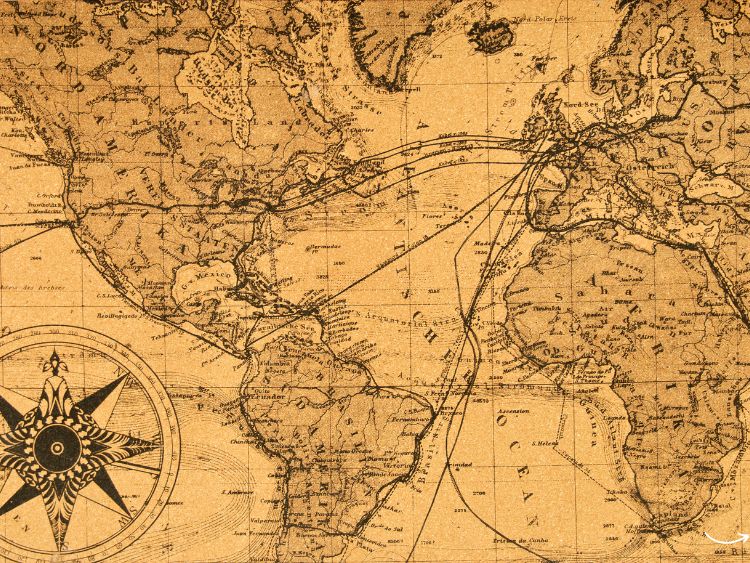When it comes to stories that have shaped the course of human history, few are as enduring and influential as the journey of Abraham. This ancient patriarch’s odyssey isn’t just a tale of faith; it’s a roadmap of spiritual and cultural significance that spans continents and millennia. But what exactly is Abraham’s journey map, and why does it continue to captivate the minds of millions? Let’s dive into the life of Abraham, trace his steps, and explore the profound impact of his travels.
The Call of Abraham: A Journey Begins
Abraham’s journey map begins in the land of Ur, an ancient city in Mesopotamia. This fertile region, situated near the modern-day Iraq-Iran border, was a bustling hub of civilization. However, despite the comforts of his homeland, Abraham received a divine call that would change the course of his life—and the world—forever.
“Leave your country, your people, and your father’s household and go to the land I will show you.” (Genesis 12:1). With this command, Abraham embarked on a journey of faith, leaving behind his roots and setting out for an unknown destination. His journey map was not just a physical route but a spiritual path laden with promises, challenges, and divine encounters.
Key Locations on Abraham’s Journey Map:
- Ur of the Chaldeans: Abraham’s birthplace and the starting point of his journey.
- Haran: A stopover where Abraham’s father, Terah, died, and where Abraham received a renewed call to continue his journey.
- Canaan: The Promised Land, which Abraham and his descendants would inherit.
- Egypt: A temporary refuge during a famine in Canaan.
- Hebron: A significant place where Abraham settled and where he purchased the cave of Machpelah, a burial site for his family.
The Significance of Haran
Haran, a city located in modern-day Turkey, plays a crucial role in Abraham’s journey map. It’s here that Abraham’s father, Terah, passed away, and where Abraham received his second divine call. Haran wasn’t just a geographical location; it symbolized a place of transition—a pause before the continuation of a monumental journey.
In Haran, Abraham amassed wealth and followers, which would later support him in his travels. But more importantly, it was a place where Abraham’s faith was tested and strengthened. The journey map of Abraham reflects not just physical movement but also spiritual growth, with Haran representing a critical juncture in this process.
The Promise of Canaan
Canaan, often referred to as the Promised Land, is arguably the most significant location on Abraham’s journey map. This land, stretching from the Mediterranean Sea to the Jordan River, was promised by God to Abraham and his descendants as an everlasting inheritance.
The journey to Canaan wasn’t straightforward. It was fraught with challenges, including conflicts with local tribes, familial disputes, and the test of faith with the near-sacrifice of his son, Isaac. Yet, it was in Canaan that Abraham established his legacy, marking the land with altars to God and solidifying his role as the father of many nations.
Key Events in Canaan:
- The Covenant of Circumcision: A sign of the covenant between God and Abraham’s descendants.
- The Birth of Isaac: The fulfillment of God’s promise to give Abraham a son through his wife, Sarah.
- The Binding of Isaac: A profound test of faith where Abraham was asked to sacrifice his son, only for God to provide a ram in his place.
The Detour to Egypt
Egypt serves as a brief yet significant chapter in Abraham’s journey map. During a severe famine in Canaan, Abraham took his family to Egypt in search of sustenance. This detour, however, came with its own set of challenges. Fearing for his life due to Sarah’s beauty, Abraham presented her as his sister, leading to a series of events that nearly cost him everything.
Despite the difficulties, Abraham’s time in Egypt was not without its benefits. He left Egypt with great wealth, which would later support his endeavors in Canaan. The journey map here shows that even detours and missteps can be part of a divine plan, leading to growth and fulfillment of promises.
Hebron: A Place of Rest and Legacy
As Abraham’s journey map neared its conclusion, he settled in Hebron, a city in the southern part of Canaan. Hebron became a place of rest, reflection, and legacy for Abraham. It was here that he purchased the cave of Machpelah, securing a burial site for his family—a tangible sign of his permanent connection to the land.
Hebron also symbolizes Abraham’s role as a patriarch, with the cave of Machpelah later becoming the burial site for Isaac, Jacob, and their wives. This city, rich in history and spiritual significance, remains a pivotal location in Abraham’s journey map, representing the fulfillment of God’s promises and the establishment of a lasting legacy.
Mapping Abraham’s Journey: A Timeline
To better understand the flow of Abraham’s journey, let’s break down the key events and locations in a simple timeline:
- Ur of the Chaldeans: Abraham’s birthplace; receives the first call from God.
- Haran: Terah’s death; Abraham receives a renewed call.
- Canaan (Shechem, Bethel, Ai): Abraham builds altars and receives God’s promise.
- Egypt: A detour during famine; returns with wealth.
- Hebron: Settles and purchases the cave of Machpelah.
This timeline highlights the physical and spiritual progression of Abraham’s journey, each step bringing him closer to the fulfillment of God’s promises.
FAQs About Abraham’s Journey Map
- What is the significance of Abraham’s journey map?
Abraham’s journey map is significant because it represents the foundational journey of faith that shaped the history of the Jewish, Christian, and Islamic traditions. It also highlights key locations and events that have spiritual and historical importance.
- Why did Abraham leave Ur?
Abraham left Ur in response to a divine call from God, commanding him to leave his homeland and go to a land that God would show him, which was Canaan.
- What challenges did Abraham face on his journey?
Abraham faced numerous challenges, including famine, conflicts with local tribes, familial disputes, and the ultimate test of faith with the near-sacrifice of his son, Isaac.
- Why did Abraham go to Egypt?
Abraham went to Egypt due to a severe famine in Canaan. However, this detour brought its own set of challenges, including a potential threat to his life because of Sarah’s beauty.
- What is the significance of Hebron in Abraham’s journey map?
Hebron is significant because it was where Abraham settled, secured a burial site for his family, and established a lasting legacy. It represents the fulfillment of God’s promises to Abraham.
Summary
Abraham’s journey map is more than just a historical route; it’s a spiritual odyssey that has shaped the faith and history of billions. From the bustling city of Ur to the Promised Land of Canaan, each location on the map holds profound significance, reflecting the trials, faith, and ultimate legacy of a man who became the father of nations. As we trace Abraham’s steps, we’re reminded of the timeless lessons of faith, obedience, and the enduring promises of God.
Authoritative Links
For further reading on the significance of Abraham’s journey and the historical context:
- www.biblicalarchaeology.org
- www.history.com/topics/ancient-history/abraham
- www.britannica.com/biography/Abraham
This article aims to provide a comprehensive look at Abraham’s journey map, offering both historical insights and spiritual reflections that resonate across cultures and religions.



